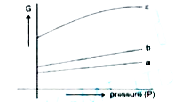If ΔH0f forH2O2(l)andH2O(l) are −188kJmol−1and−286kJmol−1, what will be the enthalpy change of the reaction 2H2O2(l)→2H2O(l)+O2(g)=? Solution in Telugu
146kJmol−1
−196kJmol−1
−494kJmol−1
−46.88 kCal mole−1
The correct Answer is:B, D
Step by step video, text & image solution for If DeltaH_(f)^(0) " for" H_(2)O_(2(l)) and H_(2)O_((l)) " are " -188 kJ mol^(-1) and -286 kJ mol^(-1), what will be the enthalpy change of the reaction 2H_(2)O_(2(l)) rarr 2H_(2)O_((l)) + O_(2(g)) =? by Chemistry experts to help you in doubts & scoring excellent marks in Class 12 exams.
Updated on:21/07/2023Topper's Solved these Questions
- CHEMICAL THERMODYNAMICSBook:AAKASH SERIESChapter:CHEMICAL THERMODYNAMICSExercise:Practice Sheet- Exercise-III
Explore 30 Videos
- CHEMICAL THERMODYNAMICSBook:AAKASH SERIESChapter:CHEMICAL THERMODYNAMICSExercise:Practice Sheet- Exercise-IV
Explore 20 Videos
- CHEMICAL THERMODYNAMICSBook:AAKASH SERIESChapter:CHEMICAL THERMODYNAMICSExercise:Practice Sheet-Exercise-I
Explore 33 Videos
- CHEMICAL KINETICSBook:AAKASH SERIESChapter:CHEMICAL KINETICSExercise:Objective Exercise - 4 (Assertion (A) & Reason (R) Type Questions)
Explore 44 Videos
- CHEMISTRY IN EVERY DAY LIFEBook:AAKASH SERIESChapter:CHEMISTRY IN EVERY DAY LIFEExercise:PRACTICE EXERCISE
Explore 29 Videos
Similar Questions
The following curve represents the variation of Gibbs function 'G' with pressure at constant temperature. Correct match of given plots with the physical state of a substance is

View SolutionFor a perfectly crystalline solid Cp.m=aT3, where a is constant. If Cp.m is 0.42 J/K − mol at 10K, molar entropy at 10K is
View SolutionWhich of the following diagram correctly represents the variation of internal energy (U) of gas under expansion at constant temperature.
View Solution(A) Spontaneous reaction may be slow or fast.
(R ) Spontaneous nature deals with feasibility of the reaction but not rate.
View SolutionAnti allergy drugs are
View SolutionCalculate the standard internal energy change for the following reactions at 25∘C:
2H2O2(l)→2H2O(l)+O2(g)
ΔfHΘat25∘C for H2O2(l)=−188kJmol−1H2O(l)=−286kJmol−1
View SolutionH_(2)(g)+(1)/(2)O_(2)(g)rarr2H_(2)O(l), DeltaH =- 286 kJ 2H_(2)(g)+O_(2)(g)rarr2H_(2)O(l)……………kJ(+-?)
View SolutionDecomposition of H_(2)O_(2) is retarded by : 2H_(2)O_(2)(l) rarr 2H_(2)O(l)+O_(2)(g)
View Solutionheat of formation of H_(2)O is -188 kJ // mol and H_(2)O_(2) is -286 kJ // mol . The enthaply change for the reaction 2H_(2)O_(2) to 2H_(2 )O+O_(2) is
View SolutionIf ΔH∘f for H2O2(l)andH2O(l) are -188kJ and mol−1 and -286 kJ mol−1, what will be the enthalpy change of the reaction 2H2O2(l)→2H2O(l)+O2(g)?
View SolutionDetermine enthalpy of formation for H_(2)O_(2)(l) , using the listed enthalpies of reactions: N_(2)H_(4)(l) + 2H_(2)O_(2)(l) rarr N_(2)(g) + 4H_(2)O(l), Delta_(r)H_(1)^(@) =-818 KJ//"mol" N_(2)H_(4)(l)+O_(2)(g) rarr N_(2)(g) + 2H_(2)O(l), Delta_(r)H_(2)^(@)=-622 KJ//"mol" H_(2)(g)+(1)/(2)O_(2)(g) rarr H_(2)O(l), Delta_(r)H_(3)^(@)=-285 KJ//"mol"
View SolutionDeltaH_(f)^(@) " for "H_(2)O_(2) and H_(2)O are -188 kJ/mole and -286 kJ/mole. What will be the enthalpy change of the reaction 2H_(2)O_(2)(l)rarr2H_(2)O(l)+O_(2)(g)
View SolutionHeat of formation of H_(2)O is -188kJ/mol and H_(2)O_(2) is -286 kJ/mol. The enthalpy change for the reaction, 2H_(2)O_(2) to 2H_(2)O+O_(2)
View SolutionΔH∘ of H2O(l) is ………… KJ/mol.
View Solution2H_(2)O_(2)(l) rarr 2H_(2)O(l) + O_(2)(g) 100 mL of 2.5 molar H_(2)O_(2) gives O_(2) gas under the condition when 1 mol occupies 24 L. The volume of O_(2) evolved in liters is:
View Solution

